Review of the best according to the editorial board. On the selection criteria. This material is subjective, does not constitute advertising and does not serve as a purchase guide. Before buying, you need to consult with a specialist.
The land amazes with the diversity and splendor of the animal world. Many amazing creatures live on the planet: dangerous and friendly, very small and real giants. We have selected several representatives of the animal world from various categories and present our ranking of giants in its incredible variety.
| Nomination | a place | name | Feature | Weight |
| The world’s giants: 15 largest animals in the world | 1 | Blue whale | BIGGEST SEA ANIMAL | 180 tons |
| 2 | Sperm whale | THE BIGGEST TOOTHED KIT | 80 tons | |
| 3 | African elephant | THE LARGEST LAND ANIMAL | 6 tons | |
| 4 | Giraffe | THE HIGHEST ANIMAL | 1.5 Tons | |
| 5 | Southern elephant seal | LARGEST MARINE CARNIVOR | 5 tons | |
| 6 | Polar bear / Kodiak bear | LARGEST LAND CARNIVOR | 700 KG. | |
| 7 | Combed (saltwater crocodile) | THE BIGGEST REPTILE | to KG. | |
| 8 | Chinese giant salamander | THE BIGGEST AMPHIBIAN | up to 70 KG. | |
| 9 | Capybara (guinea pig) | THE BIGGEST RODER | up to 105 KG. | |
| 10 | Green anaconda (sea boa) | THE BIGGEST SNAKE | 250 KG. | |
| 11 | Komodo dragon | THE BIGGEST LIZARD | 150 KG. | |
| 12 | Ostrich | THE BIGGEST FLYING BIRD | 150 KG. | |
| 13 | Dalmatian pelican | BIGGEST FLYING BIRD | 15 KG. | |
| 14 | Japanese spider crab | THE LARGEST MEMBERS | 20 KG. | |
| 15 | Giant Flying Golden Crown Fox | BIGGEST BAT | 1.5 kg. |
The blue whale is the largest marine animal
Rating: 5.0
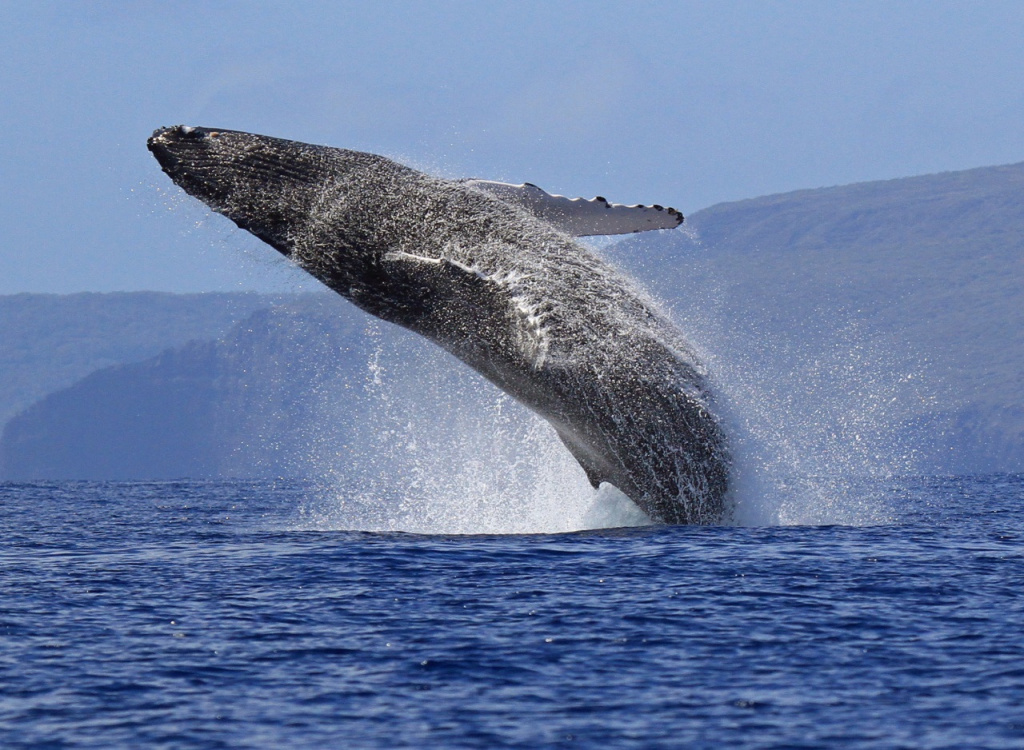
This marine mammal is unmatched in size and benevolence. The amazing creature is considered the largest representative of the aquatic world: its body length reaches 30 meters with a colossal weight of 180 (or more) tons. The giant’s tongue alone weighs almost 3 tons, and its heart is the size of a mini cooper.
The blue whale is a unique animal capable of making the loudest sounds on the planet: its ‘frequency’ can be heard by other members of the species at a distance of 16,000 kilometers. At the same time, whales do not have ears in the traditional sense. They perceive all sounds by the throat, or, more precisely, by the lower jaw, from which the sound gets to the inner ear.
The blue whale breathes oxygen, but can stay underwater for up to 20 minutes, periodically rising to the surface to breathe air into its lungs. It is noteworthy that he can drown in his sleep. This is because a significant part of its weight is light adipose tissue, which slightly exceeds the specific gravity of water. Therefore, the whale sometimes does not sleep until 3 months, and when it falls asleep, it slowly begins to sink to the bottom until it hits its tail in a dream. Then it rises to the surface and slowly descends again until the next blow by the tail.
The blue whale is a curious and very friendly animal, which is often punished for this: active hunting for these mammals is carried out to this day, significantly reducing their population.
The sperm whale is the largest toothed whale
Rating: 4.9
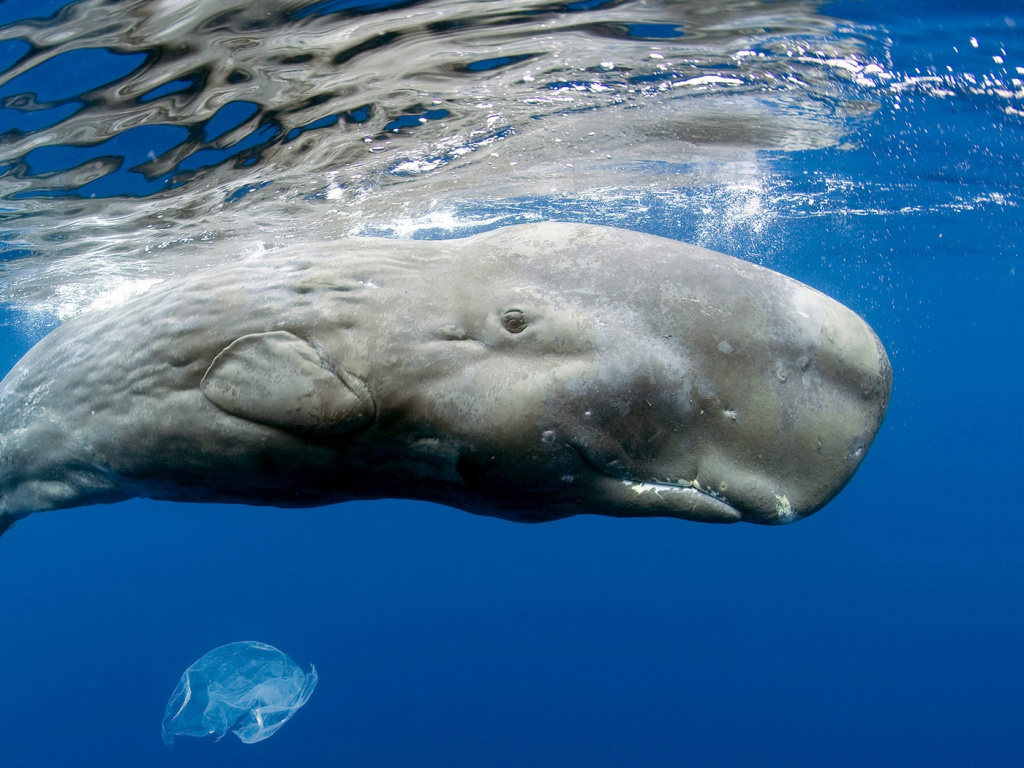
This incredible giant, of course, cannot compete in size with a blue whale, but, nevertheless, there is no equal in power in the sea. The sperm whale is 20 meters long and weighs about 80 tons. A distinctive feature is a large rectangular head, which makes up about 1/3 of the total weight. Its larger volume is occupied by the so-called ‘sperm bag’ – a transparent fatty liquid, the purpose of which has not yet been established. Some researchers believe that it is essential for echolocation. The sperm whale has the largest brain in the world: its weight reaches 8 kilograms.
The sperm whale is a kind of record holder among marine mammals: it descends to a depth of 2000 meters and can stay under water on one breath for up to 2 hours. This is beyond the power of any marine animal. Like the blue whale, the sperm whale sleeps underwater. True, this process lasts only 10 minutes. In this case, the animal occupies a strictly vertical position.
The sperm whale feeds mainly on squid (in some cases, 10-meter individuals were found in the stomach of the animal). But in the stomach of the sperm whale, not only squid is found: an unusual odorous substance accumulates there – ambergris. It has long been used as one of the main components in the perfumery industry. The price per kilogram can be as high as $ 8,000. But not only this is valuable for humans in sperm whales: their teeth are used as ornamental material.
The mighty toothed whale lives long enough (up to 50 years), having no natural enemies, except for humans, who continue to exterminate the mammal for the sake of the aforementioned ambergris, head matter and teeth.
Interesting fact. The sperm whale continues to grow throughout its life, therefore, by the size of the individual, one can confidently judge its age – the larger, the older.
The African elephant is the largest land animal
Rating: 4.8
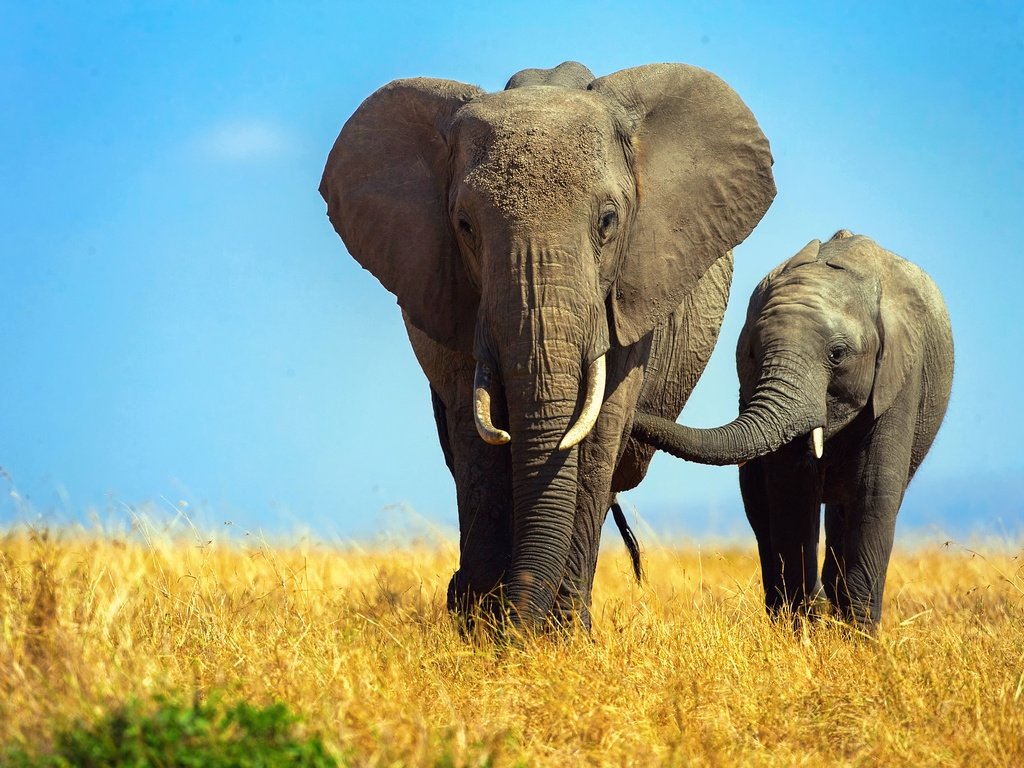
If not for the marine representatives of our planet, the inhabitant of Africa could be safely called the largest animal on earth. And yet, African elephants are truly giants. Male elephants reach 3.3 meters in height and can be up to 7.5 meters in length. The average weight of an animal is about 6 tons. Females are more modest in size: with a length of about 5.4-6.9 meters, their weight rarely exceeds 3 tons.
The average lifespan of an African elephant is about 50-70 years, but there are also special cases: the elephant Lin Wang (was a fighting elephant in the Taiwan army) lived for 86 years. Elephants are distinguished by excellent memory and excellently developed intelligence: they are able to imitate human speech (individual words). Moreover, according to observers, this is not just thoughtless repetition, but conscious reproduction.
Like humans, an elephant can be left-handed or right-handed. This is reflected in the way the animal uses its tusks. The ‘working’ tusk becomes slightly shorter over time. Over the past 150 years, the length of elephant tusks has halved. It’s all about the thriving poaching, which takes the lives of the best and largest of the elephant population. And the length of the tusks is a trait that is genetically inherited.
Giraffe is the tallest animal
Rating: 4.7
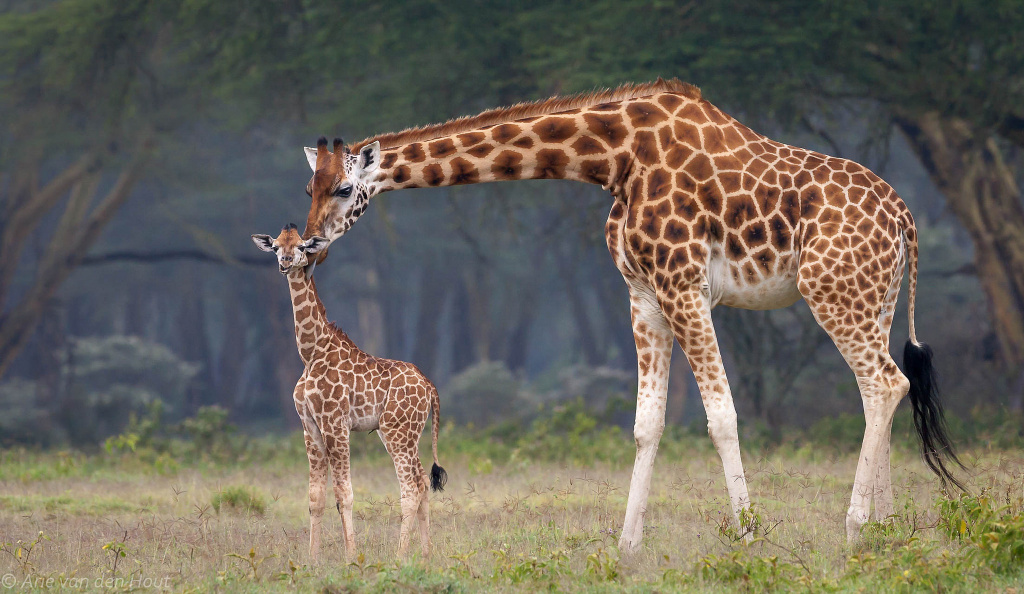
The African artiodactyl is not one of the largest animals, but in growth it will give shape to any other. The tallest mammal on the planet reaches 6 meters in height and weighs more than one and a half tons (females weigh 2 times less). The giraffe is known for its incredibly long neck, which is about 1/3 of its height. This unusual length is due to the disproportionately elongated cervical spine.
Interesting fact. Until recently, naturalist researchers and scientists relied on the Darwinian teaching that a giraffe’s long neck is evidence of evolution in the struggle for survival. But in 1996, several facts were published that refuted the idea. Today, neck length is considered to be an indicator of sexual selection for females.
By the way, the neck is not only the longest, but also the strongest part of the giraffe’s body: he uses it during the mating season in a duel with an opponent, inflicting serious blows on him, sometimes leading to death. The step width of the animal reaches 4 meters, and when running, it uses mainly its front legs, developing a speed of up to 50 km / h.
The giraffe also sleeps quickly: the duration of its rest is only 10 minutes and the process takes place while standing. By the way, female giraffes also give birth while standing, so the first thing that awaits a cub in this world is a 2-meter fall.
Southern elephant seal is the largest marine carnivore
Rating: 4.6
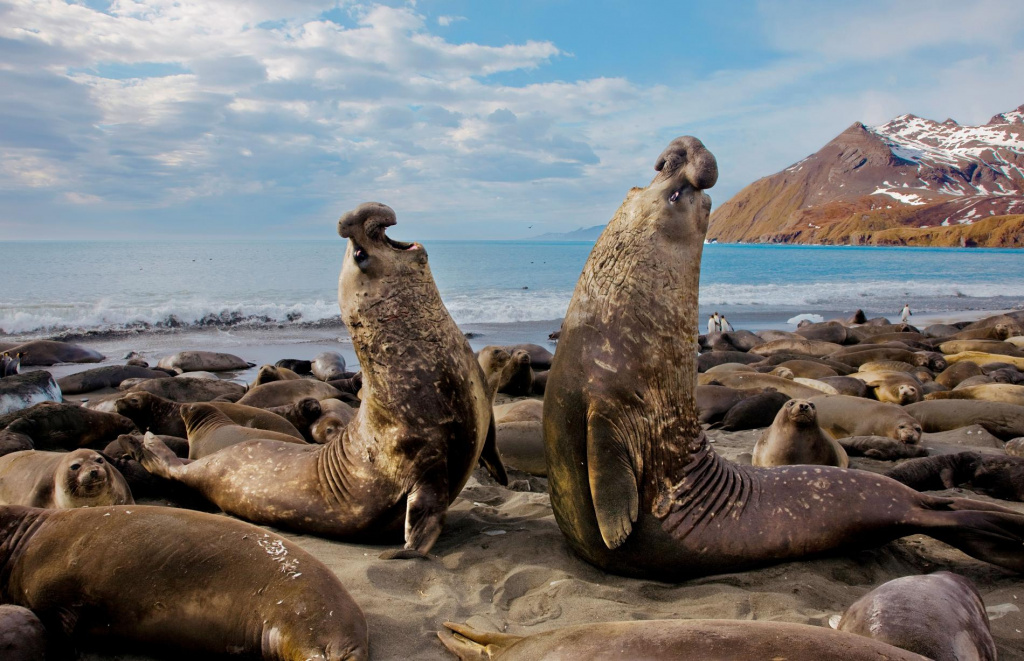
Awkward-looking, elephant seals are considered formidable enemies for their fellow tribesmen: during the mating season, the duels of southern elephant seals are not a joke, because the fight is not for one female, but for a whole harem, reaching up to 20 individuals. The males of this carnivore are gigantic in size, reaching a length of 5 meters, while the weight of the mammal ranges from 2 to 5 tons. Females are usually several times smaller.
The representative of the seal family differs significantly from its relatives with an impressive species of ‘trunk’ – a fleshy growth on the nose. In addition, an elephant seal is able to accumulate subcutaneous fat in colossal amounts – that is about 1/3 of its total mass. Another 20% of the mass falls on the blood (he needs it to store oxygen). Thus, in the body of an adult male of the southern sea word there can be up to 1 ton of blood.
The animal is distinguished by a calm, perhaps even apathetic disposition, but it will not allow itself to be excessively curious. In the natural environment, the elephant has practically no enemies, with the exception of sharks and killer whales. Many young animals perish under the carcasses of adult males during the mating season. He took part in reducing the population of animals and humans: for centuries, elephant seals were hunted – the prey was valued for its fat and fur. Today fishing is prohibited, but the animal is already on the verge of extinction. It will take it about 300 years to even double its population.
Polar bear / Kodiak bear – largest land carnivore
Rating: 4.5
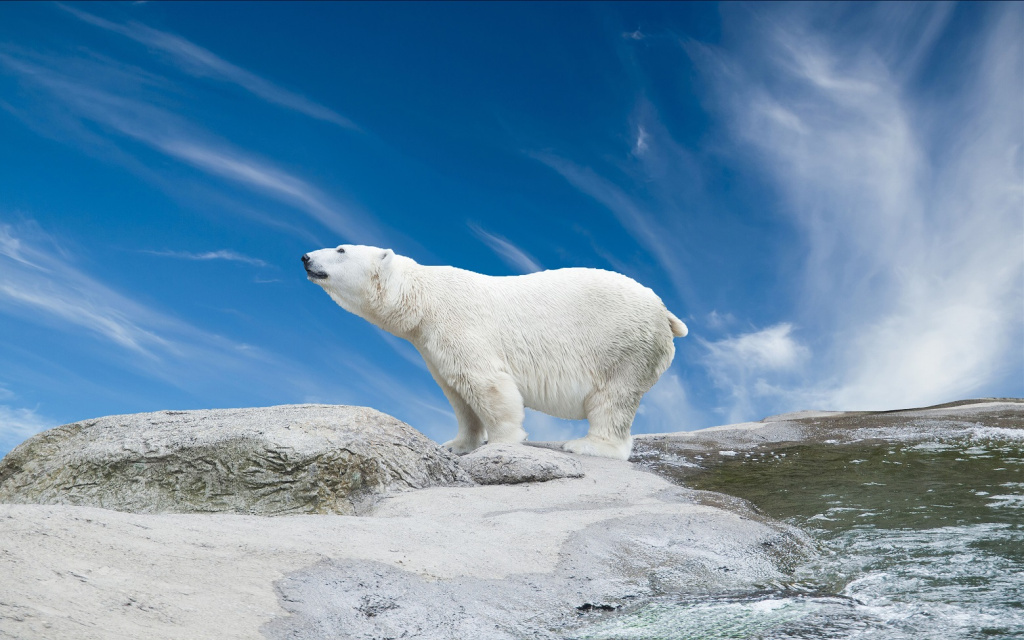
The Arctic bear is a huge land-based predator that has no natural enemies. In length, as a rule, reaches 3 meters, and the weight of the male is about 700 kilograms. The Kodiak brown bear living on the island of the same name (southern Alaska) has the same ‘parameters’.
Polar bears, in spite of the fact that they are inhabitants of land, are able to swim great distances without rest. The researchers reliably know one case: thanks to the GPS collar, they could observe the behavior of a polar bear for several months and witnessed her record 9-day (forced) swim of 687 kilometers. As a result of this ‘journey’, it lost about 1/5 of its mass and a one-year-old cub, which simply could not overcome such a distance.
The polar bear has an excellent sense of smell, smelling prey at a distance of up to 2 kilometers. The mammal strictly adheres to the principle of proper nutrition: the basis of its diet is high-calorie skin and fat of seals, as well as red meat rich in protein.
Interesting fact. The polar bear is a very curious animal and happens to explore landfills. He tastes various garbage, not understanding its danger (he can even taste engine oil and plastic).
Due to concerns about the safety of the species, a number of countries in the 50s of the last century limited and then completely banned hunting for polar bears in the hope of eliminating the threat of extinction hanging over the mammal.
Saltwater (saltwater crocodile) – the largest reptile
Rating: 4.4
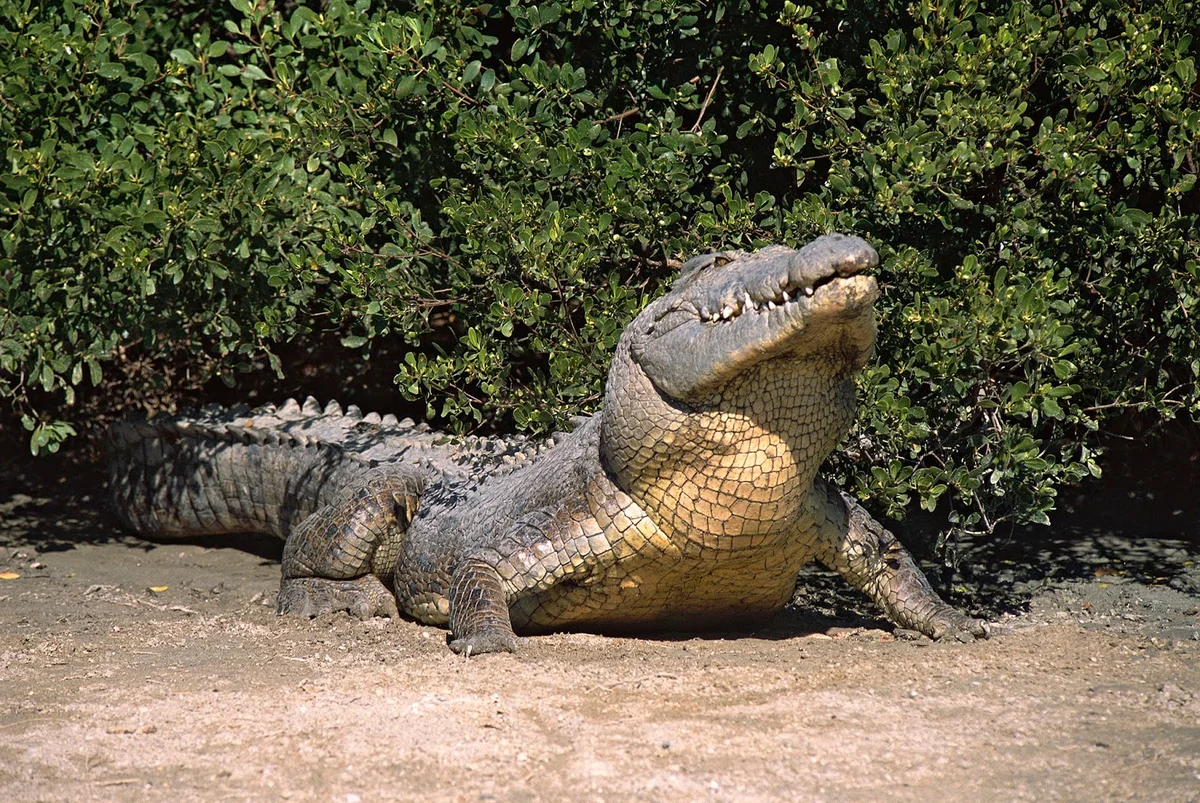
Among the 23 species of crocodiles in the world, the combed one is considered the largest and, without a doubt, the most dangerous. Inhabiting a significant range stretching from Northern Australia to the coast of Southeast Asia, the salted crocodile is the largest reptile in the world. Males reach a length of 5-6 meters and weigh about 1 ton. The variety is considered the only one in the world that regularly reaches 4.8 meters. The combed crocodile is an exceptional predator that will attack anyone who invades its territory without hesitation.
The reptile feels great both in fresh and salt water, adoring to arrange long swims: the crocodile goes into the open ocean without fear and can ‘frolic’ there for about a month, swimming colossal distances – up to 1000 kilometers.
The formidable appearance of the reptile is given by the ridges, located in two rows along the entire body. But greater horror is inspired by its huge mouth, studded with razor-sharp teeth. It should be noted that the diet of the saltwater crocodile is very diverse: being young, it eats insects, fish, amphibians, crustaceans. Adults love prey more: livestock, antelopes, birds, turtles, crabs. Even snakes and carrion eat.
For a long time, products made from the skin of this reptile were of particular value in the world. This actually led to the extermination of the species. Large farms have been established to preserve the population of the combed crocodile. The largest are located in India and Australia.
Chinese giant salamander is the largest amphibian
Rating: 4.3
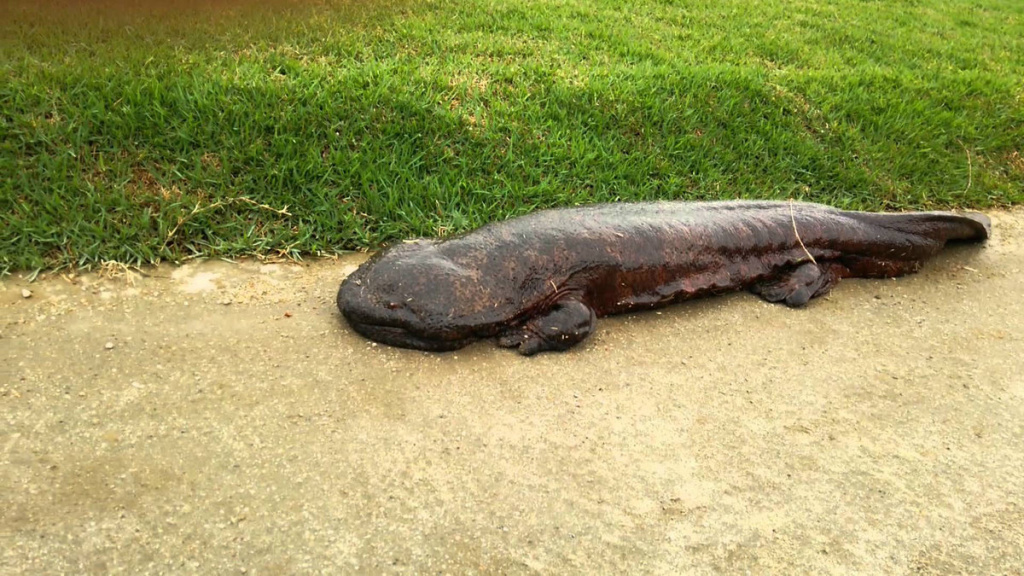
The variety is considered the largest in the world among its own kind. It often reaches a length of 1.8 meters. It is difficult to call this Ambifia pretty outwardly due to the structural features: a large head with tiny eyes, skin covered with warts, a flattened body and thick legs. This is a night hunter who never leaves the water.
The animal has experienced many events in its lifetime: the era of dinosaurs, climatic changes. But that didn’t save him. Today, the giant salamander is considered one of the rarest animals on the planet (it is listed in the Red Book as a species in a state close to threatened).
This is because the amphibian is in great danger of extinction due to the loss of habitat and its excessive pollution, as well as a huge catch. Its meat is a delicacy and is often used by the Chinese in folk medicine (it is believed that it helps with blood diseases, consumption, fractures, etc.).
In recent years, many aquariums have emerged designed specifically to increase the population of giant salamanders. But in captivity, they do not reach their natural size.
Capybara (guinea pig) – the largest rodent
Rating: 4.2

A resident of the tropics and partially – temperate climate, preferring to live in the east of South America and the Andes, the capybara is considered the largest rodent on the planet. An adult individual reaches 1.5 meters in length and almost a meter in height, differing in a rather impressive weight – up to 105 kilograms. The rodent prefers to live near water bodies and feeds exclusively on grass.
Capybara lives in small groups and, by the way, gets along with a person without any problems. The animal has a calm, friendly disposition and is absolutely harmless. The guinea pig loves to dive and can hold its breath underwater for up to 5 minutes. By the way, the capybara’s love for water is not accidental: its skin burns in the sun and, to protect it, the animal basks in the water during hot hours (sometimes wallows in the mud).
Interesting fact. For the capybara’s love for water, 300 years ago, representatives of the Catholic Church attributed the rodent to fish and allowed its meat to be consumed during fasting.
Cubs of capybaras can be safely called ‘tough nuts’: they confidently stand on their paws within a few minutes after birth and can safely eat solid food on the 4th day. Guinea pigs are very sociable animals: in ‘conversation’ with each other, they use a variety of sounds reminiscent of a dog barking, whistling, purring, grunting, etc.
Green anaconda (sea boa) – the largest snake
Rating: 4.1
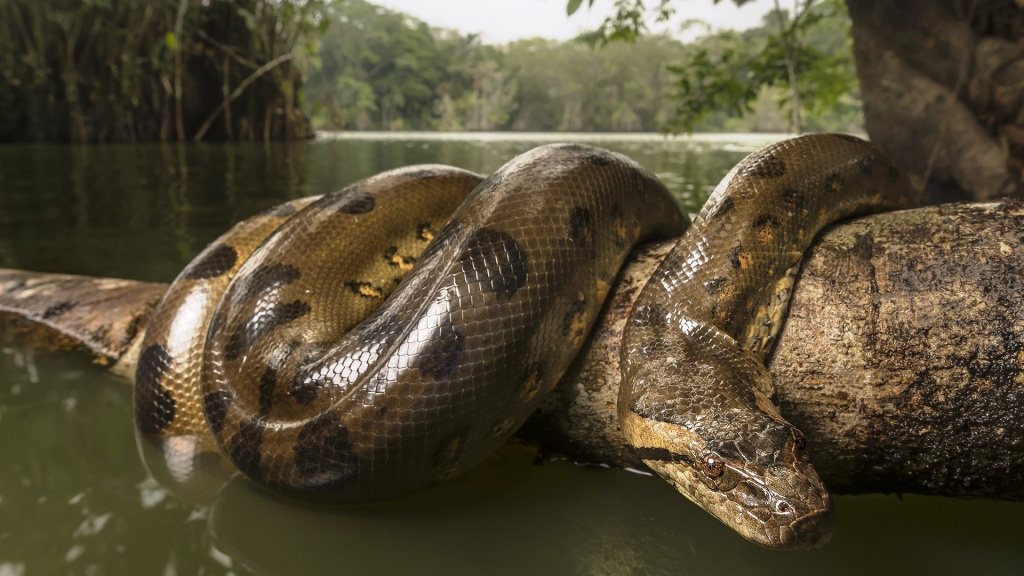
The largest anacondas that exist today is an inhabitant of the tropics of South America. Almost throughout its life, the anaconda grows. She prefers to live in water, dives well (thanks to special valves that close her nostrils), but at the same time she likes to ‘soak up’ in the sun, sticking her head to the surface for a long time. It is a predator whose diet is based on deer, wild boars, turtles, birds, caimans, etc.
It is noteworthy that the females of the sea boa are significantly larger than the males and superior in strength. The maximum documented adult size was 7.5 meters and a weight of 250 kilograms. A characteristic feature of the animal is a pungent unpleasant odor.
Contrary to popular belief, the green anaconda is not poisonous and never attacks humans. On the contrary, smelling its smell, it tries to quickly slip away. And he does the right thing. Reptile meat is considered very tasty and valuable, so the snake is actively hunted. At the same time, the species is poorly studied: even about its population, practically nothing is known.
Interesting fact. During a drought, the green anaconda escapes by burrowing into the muddy bottom of the reservoir, where it falls into a kind of numbness. Females are often pregnant. Immediately after the end of the dry period, they give birth to up to 40 cubs, which are immediately sent to hunt.
Komodo monitor lizard – the largest lizard
Rating: 4.0
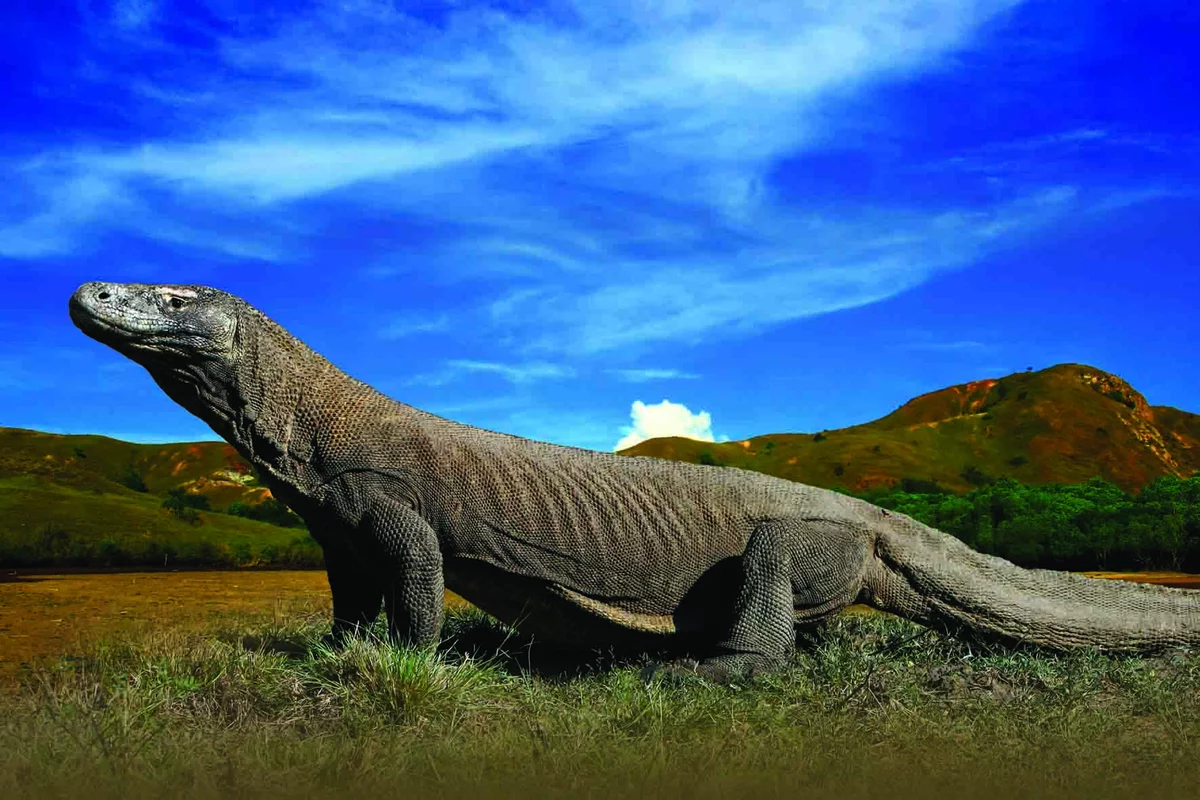
The Komodo monitor lizard or dragon is a lizard that has no equal in size. The giant inhabiting the Indonesian islands impresses with its appearance: with a length of 3 meters, the weight of the animal reaches 150 kilograms. The Komodo monitor lizard is a very dangerous predator that preys on virtually anything that moves. There are known cases of attacks on humans.
The Komodo dragon is an excellent swimmer, feeling great on land, where it develops a speed of up to 30 km / h. It often climbs trees, has a sharp scent and is very poisonous. This lizard is one of the few animals that can cope with prey, whose weight exceeds it several times. It’s all about the special attack tactics: the monitor lizard attacks sharply from cover, damaging the tendons or tearing the victim’s stomach with its teeth. If she manages to leave, he tracks her down by the smell of blood.
Interesting fact. The Komodo monitor lizard swims well and likes to be in the water, but cannot stay in it for more than 15 minutes. If during this time the lizard does not have time to swim to land, it drowns. Perhaps this determined the habitat of the animal.
The ostrich is the largest flightless bird
Rating: 3.9
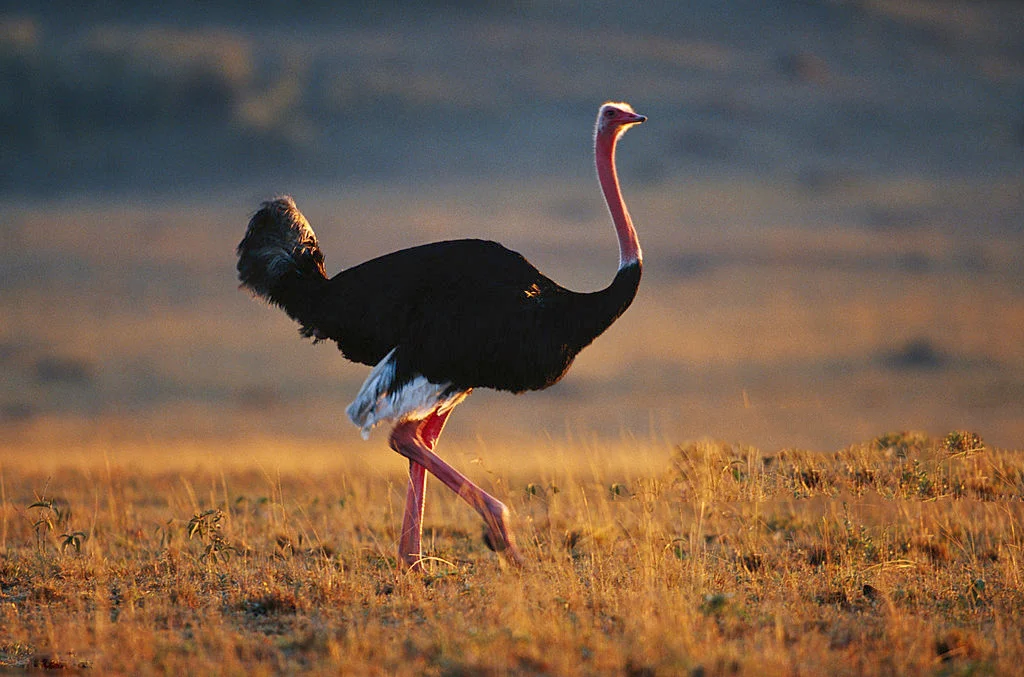
An inhabitant of Africa and the Arabian expanses, the ostrich is considered not only the largest among flightless birds, but also the fastest animal in the world among bipeds: it can reach speeds of up to 97 km / h. I am glad that the ostrich is a peaceful bird, limiting its diet to insects and small animals. An adult male reaches almost 3 meters in height and weighs 150 kilograms.
Interesting fact. Contrary to the general misconception that ostriches hide their heads in the sand when in danger, they never do that. Often the bird runs away (and there is hardly one who will catch up with it) or repels the attack with powerful legs that can kill a large predator.
Unlike other birds, ostriches do not stay dry after rain, because their feathers are not water-repellent: there is no gland in the ostrich’s body that produces the necessary substance. Interestingly, this bird does not have a single relative on the planet from a biological point of view.
Ostriches zealously defend their territory (they can also attack humans). Even the king of the savannah does not risk getting involved with them: lions often avoid contact with the ostrich, which can cripple them.
Dalmatian pelican is the largest flying bird
Rating: 3.8
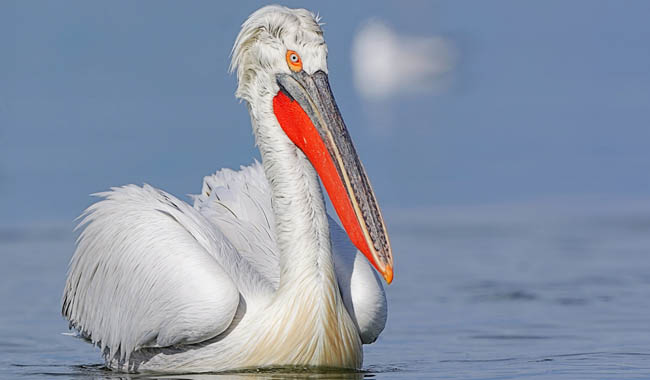
The huge bird prefers to live in India and China. Representatives of this species can often be found in southern Europe (in abundance in Greece). This massive animal reaches 1.8 meters in length and weighs about 15 kilograms. Moreover, the mass of the skeleton does not exceed 10% of the total. The wingspan of the pelican is impressive – just over 3 meters.
In the lower part of the pelican’s beak there is a so-called ‘throat sac’, in which the bird catches fish. By the way, she has to do this at the surface of the water: the light skeleton does not allow diving. Dalmatian pelicans are silent, communicating with each other only during the nesting period. At this time, you can hear their loud dull roar.
There is a very high mortality rate among newborns. This is due to several factors, among the main ones are unfavorable climatic conditions, hunger and the activity of predators.
Interesting fact. Muslims consider pelicans sacred animals. According to legend, this bird carried stones in its throat bag during the construction of shrines in Mecca.
The Japanese spider crab is the largest arthropod
Rating: 3.7
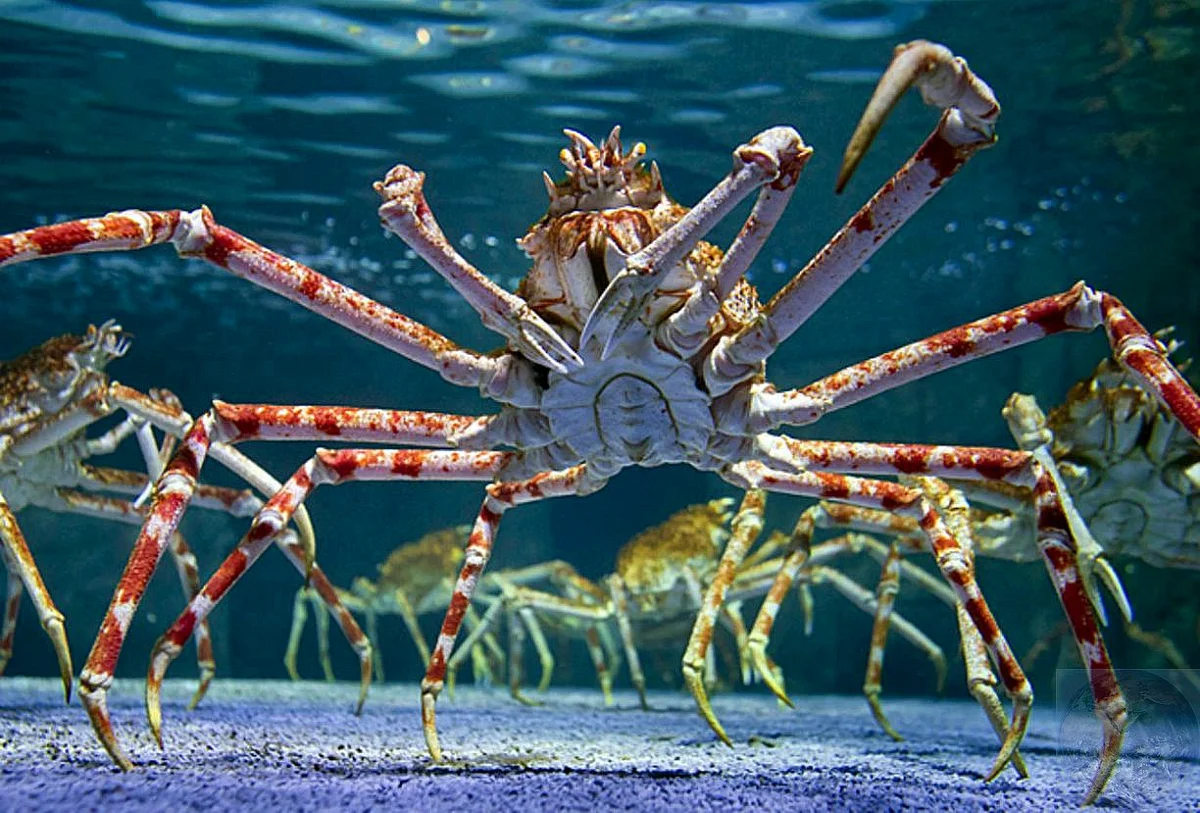
The inhabitant of Japanese sea waters is the largest representative of crustaceans in the world. His body does not exceed 0.6 m in length, but together with the limbs, this figure increases to 4 meters. The mass of the crab reaches 20 kilograms. This long-liver (the recorded period of life is 100 years), despite its formidable appearance, has a very calm disposition. Often for this reason, he is a frequent ‘guest’ of aquariums, where he easily gets along with the locals.
In spring, female spider crab usually rises from the depths to shallow water, where they lay eggs. One female can lay up to 1.5 million eggs. This amount is due to one simple fact: most of the young are eaten by marine predators before they reach maturity. There are many people who want to enjoy delicious crab meat.
Interesting fact. Adult spider crab do not ‘participate’ in the commercial catch. The fact is that, living at a depth, they eat mainly mollusks and carrion of fish. Over time, their meat acquires a shade of bitterness, which is lacking in the meat of young crabs.
The giant flying golden-crowned fox is the largest bat
Rating: 3.6
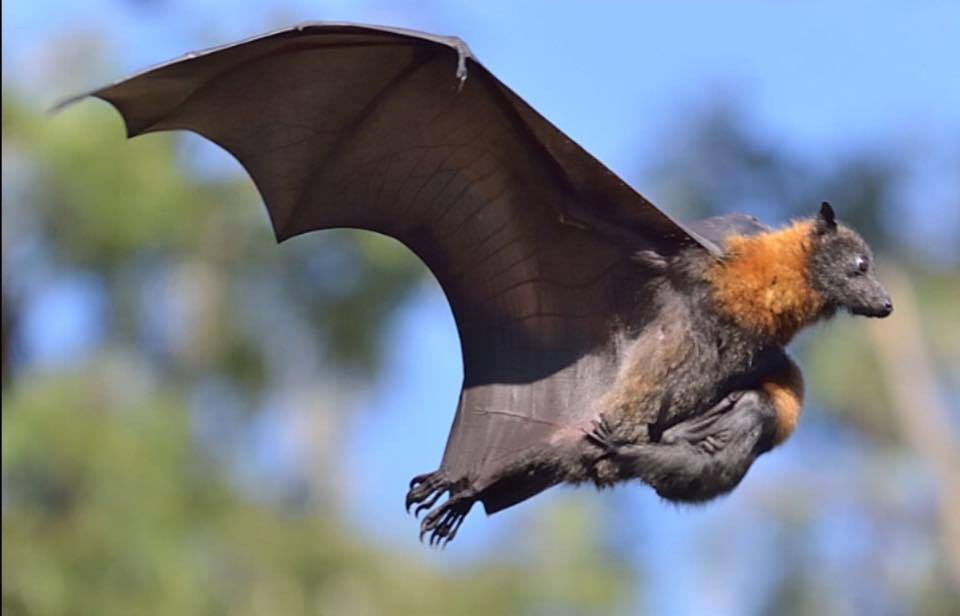
The golden-crowned bat is a forest inhabitant of the Philippine tropics from the mega-bats family. The animal got its name due to its resemblance to a red predator: the fruit bat has an elongated muzzle resembling a fox (or dog). The head is bright red in color – in stark contrast to the jet-black body. The body of a bat reaches 0.5 meters in length and weighs 1.5 kilograms. The wingspan is almost 2 meters.
This is a nocturnal animal that lives in small colonies and does not show aggression towards other inhabitants of the tropics. The giant bat is also known as the ‘silent pollinator’. In flight, it sprays the seeds of many fruit trees with its wings, thus supporting the life of the rainforests of the Philippines. The flying fox is a vegetarian whose diet is based on figs, as well as other fruits and leaves of rainforest trees.
In recent years, the population of this unusual animal has declined sharply, reaching almost the brink of extinction. The reason for this is the destruction of the natural habitat – tropical forests and a person who loves to feast on the meat of a flying fox.
Attention! This rating is subjective and does not constitute an advertisement and does not serve as a purchase guide. Before buying, you need to consult with a specialist.





